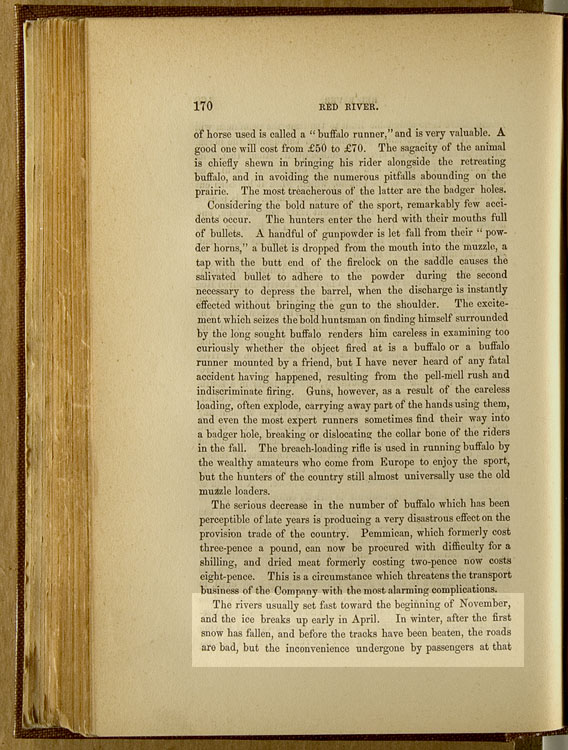
|
|
| Author: |
Joseph James Hargrave |
| Title: |
Red River |
| Publisher: |
John Lovell, Montréal |
| Year Published: |
1871, First Printing |
| Copyright Holder: |
Expired; please credit publisher as John Lovell. |
|
|
|
Joseph James Hargrave (1841-1894) was the eldest son of HBC Chief Trader James Hargrave and his wife Letitia. Educated in Scotland, Joseph James returned to Rupert's Land in 1861 as an apprentice clerk in the HBC, and served as secretary to his uncle, William MacTavish, Governor of Assiniboia and of Rupert's Land. In 1869, he began writing weekly articles for the Montreal Herald about the Northwest and the anticipated transfer of Rupert's Land to Canada.
His 1871 book, Red River, is regarded as the best history of Red River written in the 19th century. It is both a history and personal observation of the economic, social, political and religious life of Red River, and argues that the settlement and its institutions owed their existence to the vitality of the fur trade. This passage describes different modes of transportation in Red River depending on season. p 170-71, 3rd pgh: "The rivers... has its charms."
"The rivers usually set fast toward the beginning of November, and the ice breaks up early in April. In winter, after the first snow has fallen, and before the tracks have been beaten, the roads are bad, but the inconvenience undergone by passengers at that season is as nothing to that caused by the melting snow in spring, when the ground is usually, for nearly a month, so saturated with water as to render locomotion, except on horseback, almost impracticable. The change from the summer buggies and carriages to the winter equipments of cutters and carrioles with their warm furs and chains of bells is agreeable.
The monotony of mid winter is broken by the Christmas holidays, during which a good deal of festivity prevails in the settlement. The amusements are of course chiefly of a private and home kind, theatres and Christmas pantomimes not being yet known at Red River. Much driving about and visiting take place, and balls, family parties and celebrations of a kindred nature are set on foot. Processions of perhaps twenty cutters and carrioles set out for a long drive over the snow, and the occupants generally arrange to call at some friend’s house in a body and have a dance. This is called a surprise party and the dissipation has its charms."
Other
Related Material
Read more excerpts from Red River - enter 'Hargrave' in the search box to your left.
What does Joseph James Hargrave look like?
Check the Beaver Index - e.g., Red River, Christmas, traditions, pioneers, etc.
|
|